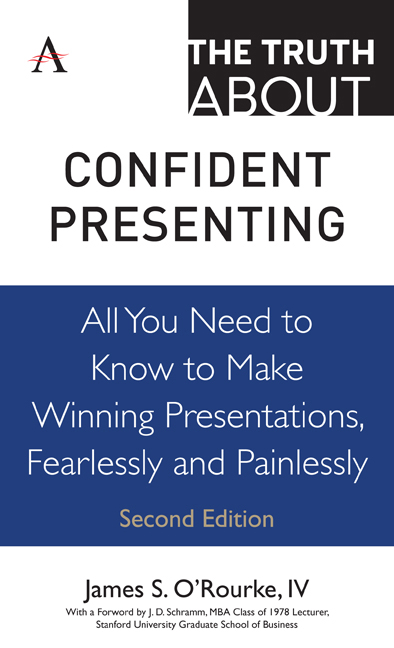 The Truth about Confident Presenting
The Truth about Confident Presenting Book contents
- Frontmatter
- Contents
- Foreword
- Introduction
- Part I Some Initial Truths
- Part II The Truth About Getting Ready to Speak
- Truth 7 Talk is the work
- Truth 8 Know what your audience is looking for
- Truth 9 There is a difference between speaking and writing
- Truth 10 Preparing a presentation is a relatively simple process
- Truth 11 Begin by analyzing your audience
- Truth 12 Know your audience
- Part III The Truth About What Makes People Listen
- Part IV The Truth About Developing Support for Your Presentation
- Part V The Truth About Getting Up to Speak
- Part VI The Truth About Managing Anxiety
- Part VII The Truth About Nonverbal Communication
- Part VIII The Truth About Visual Aids
- Part IX The Truth About Handling an Audience
- Part X The Truth About What Makes a Presentation Work
- References
- Acknowledgments
- About the Author
Truth 8 - Know what your audience is looking for
from Part II - The Truth About Getting Ready to Speak
- Frontmatter
- Contents
- Foreword
- Introduction
- Part I Some Initial Truths
- Part II The Truth About Getting Ready to Speak
- Truth 7 Talk is the work
- Truth 8 Know what your audience is looking for
- Truth 9 There is a difference between speaking and writing
- Truth 10 Preparing a presentation is a relatively simple process
- Truth 11 Begin by analyzing your audience
- Truth 12 Know your audience
- Part III The Truth About What Makes People Listen
- Part IV The Truth About Developing Support for Your Presentation
- Part V The Truth About Getting Up to Speak
- Part VI The Truth About Managing Anxiety
- Part VII The Truth About Nonverbal Communication
- Part VIII The Truth About Visual Aids
- Part IX The Truth About Handling an Audience
- Part X The Truth About What Makes a Presentation Work
- References
- Acknowledgments
- About the Author
Summary
There is nothing more important than your audience. Some speakers look at audience members as the enemy: they're the ones inducing stress in the speaker, they're the ones with the difficult questions and they're the ones who are seemingly impossible to please.
The truth is, however, the audience is the only reason you're there. I'll talk later about analyzing your audience and getting to know them better. For now, let's concentrate on what they'll be looking for in your presentation.
Most audience members will tell you that they come to a presentation looking for something they can use that is positive and beneficial to them. The audience generally assesses that content in three ways: organization, expression and support.
Organization is the simplest and easiest of the three criteria to explain. Your task is to organize your presentation in a way that makes sense to your audience. The better organized it is, the greater the chance they'll pay attention and do what you want. If you make them do the work, either because you're unable or unwilling to organize your thoughts, the audience won't like it. If they're highly motivated and know they'll receive some useful benefit from organizing the information you present, they may stay with you. They won't like, but they'll stay engaged. If the reward doesn't justify the effort, though, they'll simply check out.
You can use any of these organizational patterns to make your presentation useful, interesting and easy to understand.
■ Chronological order: Time is the controlling pattern here. Start at the beginning and move to the end. Or, start with a particular event and move backward in time. Consistently provide time references in your presentation to hold the audience's attention.
■ Topical organization: When one issue is no more important than any other, you may want to organize them by topics, one after another.
■ Cause and effect: This type of organization is good if you hope 8 to establish a likely outcome from a particular known cause or if you hope to trace the cause of a known event or effect.
■ Problem-solution: This pattern examines the nature of a problem, poses alternative solutions and then weighs those solutions according to a set of values the speaker provides. Speeches using this pattern usually offer the listener a particular solution you favor.
- Type
- Chapter
- Information
- The Truth about Confident PresentingAll You Need To Know To Make Winning Presentations, Fearlessly And Painlessly, pp. 29 - 32Publisher: Anthem PressPrint publication year: 2019


